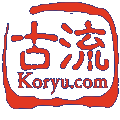What is Tankendo?
by Meik Skoss
Q: Can anyone give me some information on tankendo? Especially, when (and why) was it created? And is it just sparring or there are kata as well?
A: Tankendo is an art associated with jukendo. Both were created during in the Meiji and Taisho eras, as part of the effort to modernize the Japanese army. Originally, it was based on a French system of bayonet combat, but that proved to be quite unsatisfactory to Japanese soldiers, and they introduced elements of Japanese spear technique (notably the Ito-ryu and Hozoin-ryu), including the tobi fumikomi that's still used in training today.
Tankendo grew out of the Japanese experience in the Russo-Japanese War and World War I, when the Japanese army had occasional need to use the bayonet (or juken) in dismounted fashion. It was felt that a technical rationale was needed for the bayonet to be used effectively in close quarters. Again, the military looked to classical techniques for inspiration, notably that of the Toda-ryu.
Both jukendo and tankendo include training in fundamentals (kiso), basic and applied techniques (kihon and oyo waza), attack training (dai-ni kyoshu, which is basically the same as kakari geiko in kendo), freestyle training (dai-san kyoshu, or ji geiko), shiai, and kata. There are different series of kata for both weapons: juken-juken (8), juken-tanken (6), juken-tachi (6), tanken-tanken (8), and, finally, tanken-juken (6, the same as juken-tanken). I'm not sure if there are tanken-tachi kata, but that would likely be a set of 6 as well.
The Japanese Imperial Army combined training in juken/tanken (under the rubrics of jukenjutsu/tankenjutsu) with gunto soho, i.e., Toyama-ryu battojutsu (solo) and tachigumi (pairs training). All these sets of individual and paired kata provide one heckuva good background in CQC with sharp pointy objects and really constitute an excellent system.
Personally, I think these arts are about the best thing going for budo types who specialize in unarmed techniques (whether grappling or sparring), as they've got a lot of breadth and depth. If one is of a practical bent, this is the stuff what will get one through a long day full of meetings, demanding clients and supervisors, and just plain old everyday hassles.
Oh, yeah, did I mention that in isshu jiai, the tanken usually beats the juken? It's a great example of use of ma-ai, hyoshi, and hassuji. If one is going to study only *one* weapon, tanken or hanbo are the weapons of choice: they provide the most flexible responses to a very wide variety of situations.

Contact Koryu.com
Last modified on December 27, 2017
URL: https://koryu.com /library/mskoss12.html
Copyright ©2022 Koryu Books. All rights reserved.
